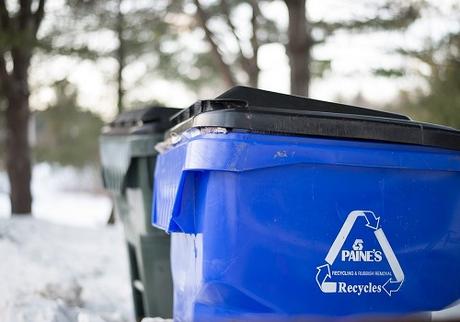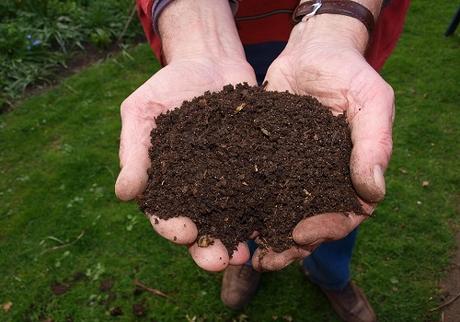Disposables refer to all the consumer products and packaging that are designed to be discarded as waste after being used a few times. These include mostly kitchen waste which includes disposable utensils, packaging materials for such products as eggs or milk, and other wastes from around such as diapers. Biodegradable disposables are often encouraged as they are either compostable or biodegradable and therefore serve to protect the environment from potential degradation.
When it comes to disposing of waste, it is important to consider whether they are compostable or not. Composting simply means the process of breaking down the organic matter or food waste in the presence of water, air, and other microorganisms. The end product is known as compost and can be used in farming for the creation of a nutritious and healthy topsoil.

Most people, nowadays, are opting to go green. This means that people are adopting the use of packaging and other materials that can be composted easily or are biodegradable. However, there is a difference between the two.
Difference between Biodegradable Packaging and Compostable Packaging
While these two both work to protect the environment from pollution from inorganic matter, compostable packaging has an advantage since no toxins are produced when the matter is broken down. Compostable packaging also decomposes faster than biodegradable.
The Biodegradable Product Institute (BPI) has developed a set of scientific standards that help determine whether the products are biodegradable or not. While compostable packaging normally takes a short time to be broken down, biodegradables take around 90-180 days depending on the material used. The products from Vegware among other companies have certified compostable packaging. You should always look for the initials “BPI Certified” on products to make sure they can be broken down easily in commercial facilities.
Examples of Compostable Materials
Today, many companies and individuals are opting to use compostable products for their day to day uses. Below is a list of some of the compostable packaging and products made of Polylactic, bagasse or vegetable starch, available in the market:
- Compostable Cups – these are eco-friendly disposable hot or cold cups that are made of 100% natural, compostable and sustainable materials.
- Compostable Plates – these are the next best alternative for ceramic plates normally used at picnics, parties, and other events.
- Compostable Cutlery – these are among the disposable and compostable utensils used such as forks, knives, and spoons that have come to replace the plastic ones.
- Compostable packaging materials – currently, product manufacturers are opting to go for the compostable packages for their products. These mostly include milk and egg packages that can be discarded easily.
What are the Advantages of Using Compostable Products?
There are a number of benefits associated with the use of products that can be broken down easily. These include:
- They are more appealing to the consumers who take concern on the impacts of consumption on the environment.
- They make a great contribution in reducing the amount of environmental pollution.
- They also help in the conservation of natural resources.
- It provides the chance for easy disposal.
- It reduces the carbon footprint of your company.
- They can be recycled, reduced and reused sustainably, among other benefits.
How Do You Compost Your Packaging And Other Disposables?
When it comes to composting, different items should be sorted into different bins. There are certain products that shouldn’t be included in your compost such as meats, glass, metal and plastics, greases and oils. Below are some steps for composting:
Step 1: Choose and Label your Bins
When it comes to composting, certain products are not to be disposed of together. It is necessary to have clearly-marked lidded bins in your kitchen for different products such as vegetables and compostable packaging away from meat products. Also, be sure to line the bins with a compostable bag.
Step 2: Disposing of the Compostable Scraps
When working in the kitchen and preparing meals, it is important to make sure that you collect the compostable items in the correct bins. Remains from vegetables and fruits, bread and other wheat products, egg shells, tea bags, and coffee grounds and another compostable packaging should be put in one bin as they make great compost.
Step 3: Disposing of Other Scraps
As you go about your business in the kitchen, it is important to note your bins are properly in order to avoid a mix-up. All meat products from dairy, poultry and fish, fatty foods, grease, and oils, as well as glass, plastic and metal packaging should not be added to the compost bins.
Step 4: Making Compost
In case you have a backyard compost heap, take the bin containing the compostable products there. Combine the compostable kitchen scraps with other carbon-rich materials for a well-balanced compost. Most kitchen scraps are considered nitrogen-rich or “green”. Combine them with such materials as wood shavings, leaves and grass which are rich in carbon.

In case you don’t have the above option, you can dispose of the bin’s contents in the designated Eco-Stations around your town. A compost roll cart may also be provided in various towns with frequent pickup by the sanitation group.
Once you do all the above, it is important to make it a regular thing. In case the compost heap is in your backyard, make sure you turn it up every few days using a rake to provide aeration. Specific conditions must be met in order to fasten the decomposition process.
When everyone takes the responsibility to compost their waste and use compostable products, it will help with Closing the Loop. What does this mean?
Closing the Loop entails all the activities that involve the collection and recycling of consumer waste. Companies such as Vegware are working together with ORG towards providing consumers with a way to dispose of their products to encourage closing the loop.
This activity is normally easy to achieve in a closed setting such as during a festival or event where people can dispose of their compostable products easily in the provided bins. However, it takes greater personal initiative, especially when you purchase products from the “Grab and Go” places. If the compostable material is not disposed of properly, it can end up in a landfill; where it can take longer to decompose due to the formation of heaps that limit the supply of the necessary conditions required for decomposition.
